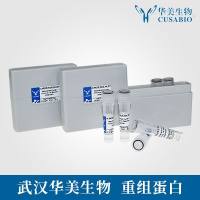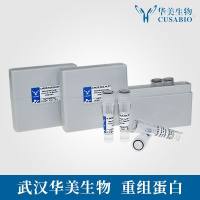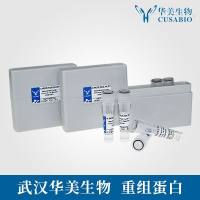Reversible Biotinylation of the 5′‐Terminus of Oligodeoxyribonucleotides and its Application in Affinity Purification
互联网
- Abstract
- Table of Contents
- Materials
- Figures
- Literature Cited
Abstract
The preparation of two reversible biotinylation phosphoramidites and their application in labeling and affinity purification of synthetic oligodeoxyribonucleotides will be described. In both cases, the biotin is linked to the 5??terminus of DNA through a diisopropyl silyl acetal functionality. This linkage is completely stable under certain postsynthetic cleavage/deprotection conditions, but can be readily broken by fluoride ions, releasing unmodified 5??OH and 5??phosphate DNA, respectively. To demonstrate the use of these reversible biotinylation methods, crude DNA was incubated with NeutrAvidin?coated microspheres, full?length biotinylated DNA was efficiently attached to the solid phase, and nonbiotinylated failure sequences and other impurities were readily removed by washing with buffer. Cleavage of the silyl acetal linkage afforded high?quality, full?length, unmodified 5??OH and 5??phosphate DNA, respectively, depending on which of the two phosphoramidites was used. It is anticipated that this method will find applications in areas that require efficient isolation of DNA from a complex mixture.
Keywords: DNA; Phosphoramidite; Biotinylation; Fluoride Cleavage; Silyl Acetal; Avidin; Affinity Purification
Table of Contents
- Basic Protocol 1: Reversible Biotinylation Via a Diisopropyl Silyl Acetal Linker Yielding 5′‐OH DNA
- Basic Protocol 2: Reversible Biotinylation Via a Diisopropyl Silyl Acetal Linker Yielding 5′‐Phosphate DNA
- Support Protocol 1: Application of the Reversible Biotinylation Method in Affinity Purification Using Avidin‐Coated Microspheres
- Support Protocol 2: Synthesis of Biotinyl Alcohol
- Commentary
- Literature Cited
- Figures
Materials
Basic Protocol 1: Reversible Biotinylation Via a Diisopropyl Silyl Acetal Linker Yielding 5′‐OH DNA
Materials
Basic Protocol 2: Reversible Biotinylation Via a Diisopropyl Silyl Acetal Linker Yielding 5′‐Phosphate DNA
Materials
Support Protocol 1: Application of the Reversible Biotinylation Method in Affinity Purification Using Avidin‐Coated Microspheres
Materials
Support Protocol 2: Synthesis of Biotinyl Alcohol
|
Figures
-
Figure 4.20.1 Preparation of reversible biotinylation phosphoramidite S.3 and structures of biotinylated 5′‐OH DNAs S.4 and S.5 . View Image -
Figure 4.20.2 HPLC profiles of DNAs S.5 (trace a), 5′‐TACAGTGACT‐3′ (trace b), S.9 (trace c), and 5′‐H2 O3 PO‐ACAGTGACT‐3′ (trace d) generated on a C18 reversed‐phase column (100 Å, 250 × 4.6 mm, Varian Analytical Instruments), using a linear gradient of 0% to 45% solvent B (90% acetonitrile) in solvent A (0.1 M triethylammonium acetate, 5% acetonitrile) over 60 min at a flow rate of 1 mL/min by detecting the absorbance of DNA at 260 nm. For a detailed protocol for performing reversed‐phase HPLC, refer to UNIT . View Image -
Figure 4.20.3 Preparation of reversible biotinylation phosphoramidite S.7 and structures of biotinylated 5′‐phosphate DNAs S.8 and S.9 . View Image -
Figure 4.20.4 Removal of biotin from biotinylated DNAs S.4 and S.8 to generate unmodified 5′‐OH DNA S.10 and unmodified 5′‐phosphate DNA S.12 , respectively. View Image -
Figure 4.20.5 Preparation of the biotinyl alcohol S.1 . View Image
Videos
Literature Cited
| Literature Cited | |
| Agrawal, S., Christodoulou, C., and Gait, M.J. 1986. Efficient methods for attaching non‐radioactive labels to the 5′ ends of synthetic oligodeoxyribonucleotides. Nucl. Acids Res. 14:6227‐6245. | |
| Cadet, J. and Vigny, P. 1990. The photochemistry of nucleic acids. In Bioorganic Photochemistry (H. Morrison, ed.) Vol. 1, pp. 170‐184. John Wiley & Sons, New York. | |
| Dawson, B.A., Herman, T., Haas, A.L., and Lough, J. 1991. Affinity isolation of active murine erythroleukemia cell chromatin: Uniform distribution of ubiquitinated histone H2A between active and inactive fractions. J. Cell. Biochem. 46:166‐173. | |
| De Vos, M.J., Van Elsen, A., and Bollen, A. 1994. New non‐nucleosidic phosphoramidites for the solid phase multi‐labeling of oligonucleotides: Comb‐ and multifork‐like structure. Nucleosides Nucleotides 13:2245‐2265. | |
| Fang, S. and Bergstrom, D.E. 2003a. Reversible biotinylation phosphoramidite for 5′‐end‐labeling, phosphorylation and affinity purification of synthetic oligonucleotides. Bioconjugate Chem. 14:80‐85. | |
| Fang, S. and Bergstrom, D.E. 2003b. Fluoride‐cleavable biotinylation phosphoramidite for 5′‐end‐labeling, affinity purification of synthetic oligonucleotides. Nucl. Acids Res. 31:708‐715. | |
| Gildea, B.D., Coull, J.M., and Koster, H. 1990. A versatile acid‐labile linker for modification of synthetic biomolecules. Tetrahedron Lett. 31:7095‐7098. | |
| Greenberg, M.M. 1995. Photochemical release of protected oligodeoxyribonucleotides containing 3′‐glycolate termini. Tetrahedron 51:29‐38. | |
| Greenberg, M.M. and Gilmore, J.L. 1994. Cleavage of oligonucleotides from solid‐phase supports using o‐nitrobenzyl photochemistry. J. Org. Chem. 59:746‐753. | |
| Guzaev, A., Salo, H., Azhayev, A., and Lönnberg, H. 1995. A new approach for chemical phosphoryl‐ation of oligonucleotides at the 5′‐terminus. Tetrahedron 51:9375‐9384. | |
| Langer, P.R., Waldrop, A.A., and Ward, D.C. 1981. Enzymatic synthesis of biotin‐labeled polynucleotides: Novel nucleic acid affinity probes. Proc. Natl. Acad. Sci. U.S.A. 78:6633‐6637. | |
| McInnes, J.L. and Symons, R.H. 1989. Preparation and detection of nonradioactive nucleic acid and oligonucleotide probes. In Nucleic Acid Probes (R.H. Symons, ed.) pp. 33‐80. CRC Press, Boca Raton, Fla. | |
| Neuner, P. 1996. New non nucleosidic phosphoramidite reagent for solid phase synthesis of biotinylated oligonucleotides. Bioorg. Med. Chem. Lett. 6:147‐152. | |
| Olejnik, J., Krzymanska‐Olejnik, E., and Rothschild, K.J. 1996. Photocleavable biotin phosphoramidite for 5′‐end‐labelling, affinity purification and phosphorylation of synthetic oligonucleotides. Nucl. Acids Res. 24:361‐366. | |
| Pon, R.T. 1991. A long chain biotin phosphoramidite reagent for the automated synthesis of 5′‐biotinylated oligonucleotides. Tetrahedron Lett. 32:1715‐1718. | |
| Reddy, M.P., Hanna, N.B., and Farooqui, F. 1994. Fast cleavage and deprotection of oligonucleotides. Tetrahedron Lett. 35:4311‐4314. | |
| Shimkus, M., Levy, J., and Herman, T. 1985. A chemically cleavable biotinylated nucleotide: Usefulness in the recovery of protein‐DNA complexes from avidin affinity columns. Proc. Natl. Acad. Sci. U.S.A. 82:2593‐2597. | |
| Urdea, M.S., Warner, B.D., Running, J.A., Stempien, M., Clyne, J., and Horn, T. 1988. A comparison of non‐radioisotopic hybridization assay methods using fluorescent, chemiluminescent and enzyme labeled synthetic oligodeoxyribonucleotide probes. Nucl. Acids Res. 16:4937‐4956. | |
| Wincott, F., DiRenzo, A., Shaffer, C., Grimm, S., Tracz, D., Workman, C., Sweedler, D., Gonzalez, C., Scaringe, S., and Usman, N. 1995. Synthesis, deprotection, analysis and purification of RNA and ribozymes. Nucl. Acids Res. 23:2677‐2684. |







